The most common causes for a leak on your bathroom vent are bad vent installation, ice buildup in your vents, and high humidity in your house.
We’ve compiled a list of the most common causes of bathroom vent leaks as well as how you can resolve them and prevent them from reoccurring in the future.
Causes of Vent Leaks and How to Fix Them
Before doing anything, it is best to carefully examine the root cause of the vent leak.
This problem is oftentimes due to three reasons: the vent was installed incorrectly, your house is in the colder regions where ice buildup is common, or your house is too humid and moisture condenses too quickly.
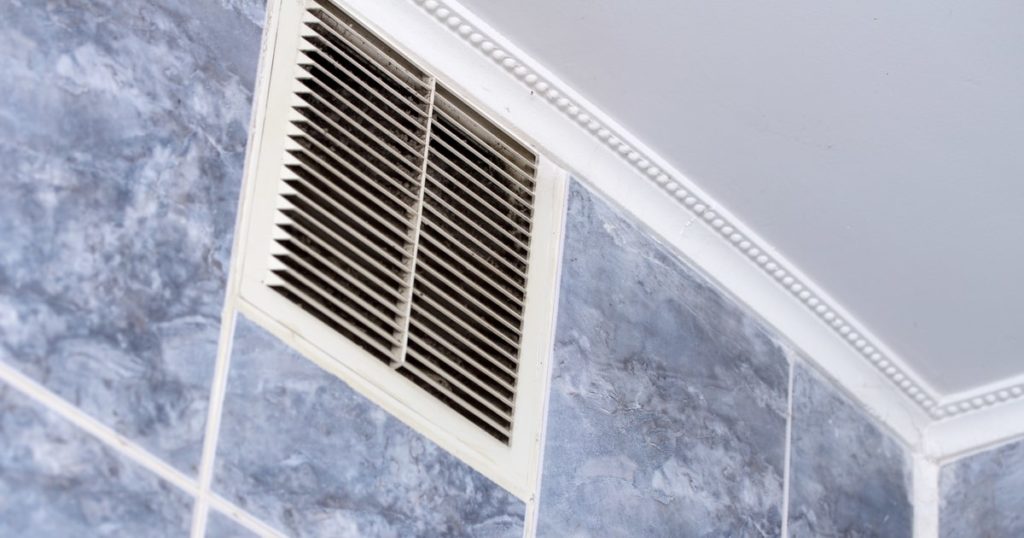
Improper Bathroom Vent Installation
An improper vent installation can lead to gaps and holes between the fan and the bathroom vent. This can affect the ability of the fan to suction and quickly expel moisture outside.
When the bathroom vent accumulates enough moisture, condensation will start, meaning the vapor will turn back into its liquid form. This is most likely the dripping water you’ll see coming out of your vent.
How do you test bathroom vents?
The most common technique used to determine if your bathroom vent is installed properly and works well is a toilet paper test.
This test involves placing a piece of toilet paper over the vent. A fully enclosed vent can efficiently suck air and moisture from the bathroom.
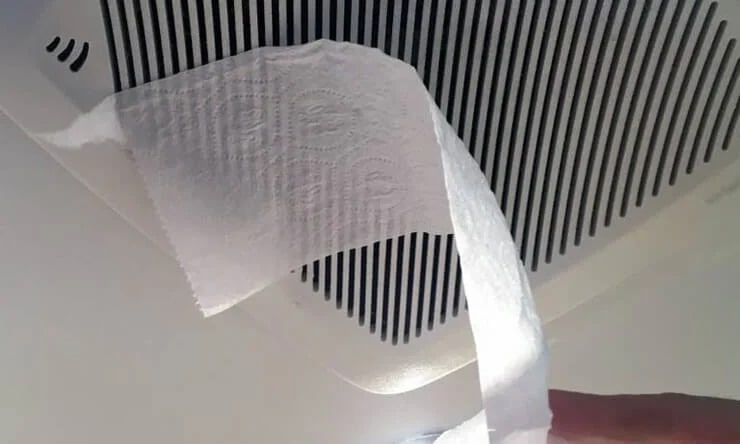
If the toilet paper sticks on the vent with no assistance from you, then your vent passed the test and the installation is good.
However, if the suction is too weak and your toilet paper fails to stick on the vent, then the issue might be that your vent is too loose or isn’t placed well to fully cover your duct, which results in air escaping through the gaps of your fan.
How do you fix faulty vent installation?
The best thing to do to fix a faulty vent installation is to fully insulate your bathroom vent and fan.
Make sure that the material you use is a fully enclosed one like a PVC pipe instead of relying on cheap solutions like duct tape, as these can wear easily over time.
It is also worth examining the total length of your bathroom vent. If it is possible to make it shorter, then do it, as the shorter it is, the less effort your bathroom fan needs to do to expel the moisture from your bathroom.
While it is entirely possible to do these suggestions entirely on your own, the complexity of remodeling your bathroom vents might be best done by a professional instead.
Thawing of Accumulated Ice

Ice thawing in your bathroom vents is a common problem during the colder months and if your house is located in a colder region.
With the cold temperature rapidly cooling the moisture, it is really easy for moisture to quickly condense and flow back as water through your vents.
This problem is also common if the vents weren’t placed properly and instead, vents air directly to the attic, which allows the quick formation of ice dams.
An ice dam is a block of ice that blocks off any water or air from flowing through your gutter and pipes.
If left alone, it will eventually slowly destroy your insulation as well as bring condensed moisture back through your vents since the moisture has nowhere else to go.
What to do if ice starts to thaw in my vent?
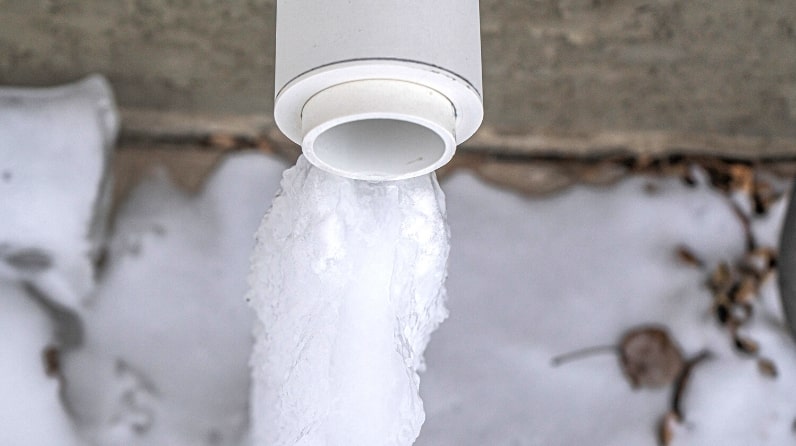
If ice buildup in your vents thaws and results in leaks, it is a good idea to keep the bathroom fan on longer after you shower.
Keeping the fan on longer ensures that all moisture in the vent is expelled outside rather than remaining inside the vents.
Moisture left lingering in the vents can quickly condense into water and then freeze as soon as the air starts hitting lower temperatures.
Thinking long term, we recommend you swap out your bathroom fan with a stronger one so as to expel the moisture more efficiently and faster.
If your house is located in a colder region, it is generally recommended that you insulate your vents with specialized materials with an R3 or R8 rating, as they can keep your ducts warm enough to prevent freezing.
High Humidity in Your Home
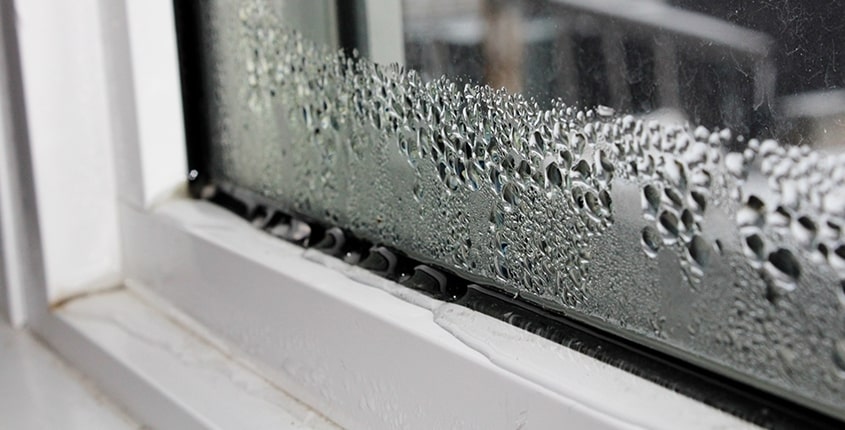
Another possible cause as to why your bathroom vent fails to properly remove moisture is the high humidity inside your house. Having a high humidity means that the amount of water vapor in the air is too high.
When your house is too humid, that means that your bathroom vent can’t displace the moisture fast enough from your bathroom because the ducts are already too humid to accumulate any more moisture.
Therefore, instead of expelling the moisture outside, the water vapor inside your vents condenses immediately back into its liquid form, which can flow back to your rooms, especially the bathroom.
What to do if my house is very humid?
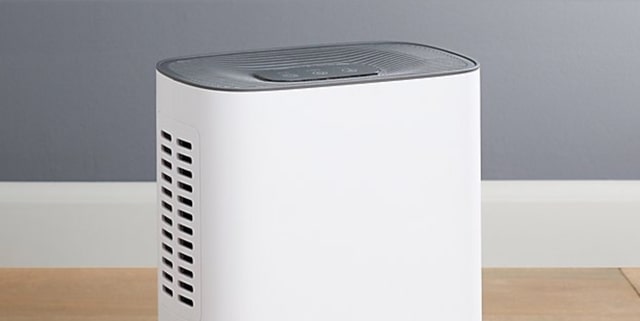
A quick solution to address the high humidity in your house is to install a dehumidifier. A dehumidifier works by removing the excess moisture in your rooms, reducing the average humidity in your house.
This problem is more common in hotter regions because the heat can rapidly evaporate water more than usual.
So whenever the hotter months start, always keep your air conditioner at the ready and keep most of your windows closed.
How to Prevent Another Vent Leak
Here are some questions that may help you learn more about how to properly maintain your bathroom vent and avoid another water leak from happening again.
How should I inspect my bathroom vent?
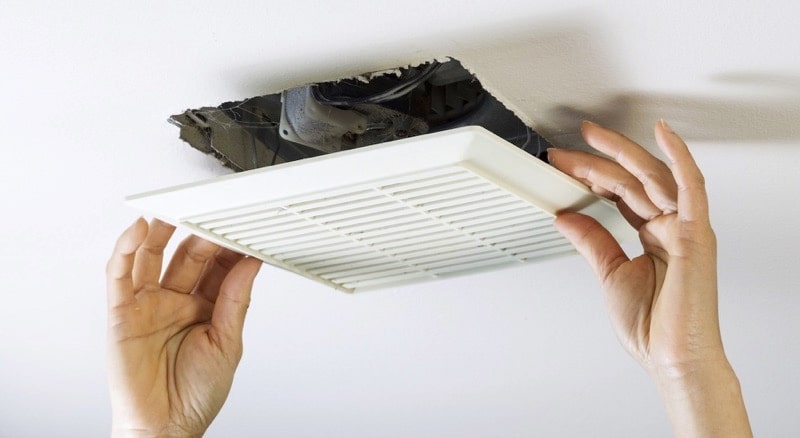
Inspect your bathroom vent by carefully looking for leaks from the bathroom to the vent exhaust. Try to inspect the whole vent system, especially in the attic, and look for signs of leaks like rusting or sounds of escaping wind.
Aside from visual cues, you can also rely on your sense of touch by placing your hand over the connecting points between the vents. If you feel a faint air, then that is a clear sign of a leak in your vents.
Make sure to bring a marker with you during your inspection so as to properly mark any leaks you find and cover them up properly after the inspection.
Is it important to insulate my bathroom vent?
It is important to insulate your bathroom vent especially if you live in a colder region.
Because most vents run through the poorly insulated areas of the house like the attic, the chances of condensation occurring are high.
Unchecked condensation can lead to the deterioration of your vents and cause water leaks in your vents.
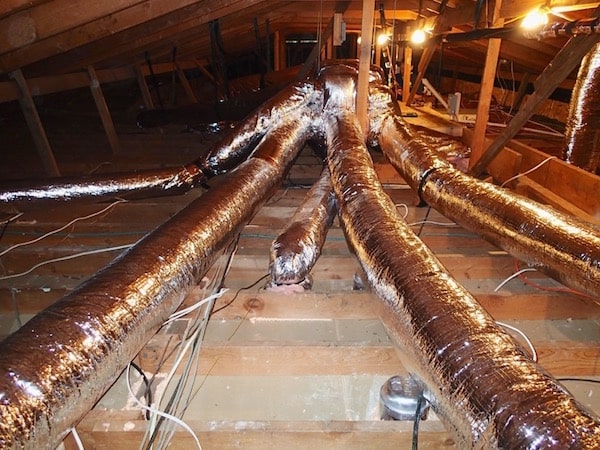
With proper insulation like an insulated flex duct, you can avoid the hot moisture flowing through your vents from interacting with the colder temperature outside the vent.
Aside from proper insulation, it is also wise to check the vent leading outside of your house, especially during winter months. The ice dam that may form during the winter can block the vent and prevent the hot air from being released outside.
Can a dehumidifier solve the high humidity in my house?
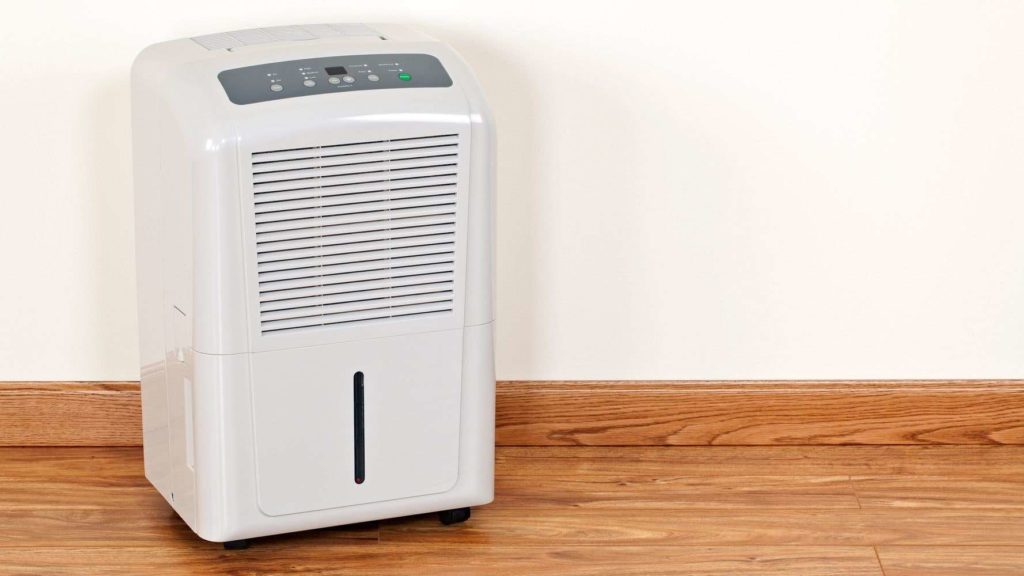
A dehumidifier can act as a quick solution to solving any humidity problems you might have in your home.
With it, you can quickly remove most of the water vapor in the air which can condense back into liquid if the humidity is too high.
Aside from resolving the high moisture in your bathroom, a dehumidifier can also prevent the growth of mold and fungi in your bathroom which are highly attracted to damp areas.
High humidity is pretty common in the hotter months, so be prepared to switch on your dehumidifier if your bathroom vent can’t displace the moisture in the bathroom fast enough.
Do I need to replace the fans of my bathroom vent?
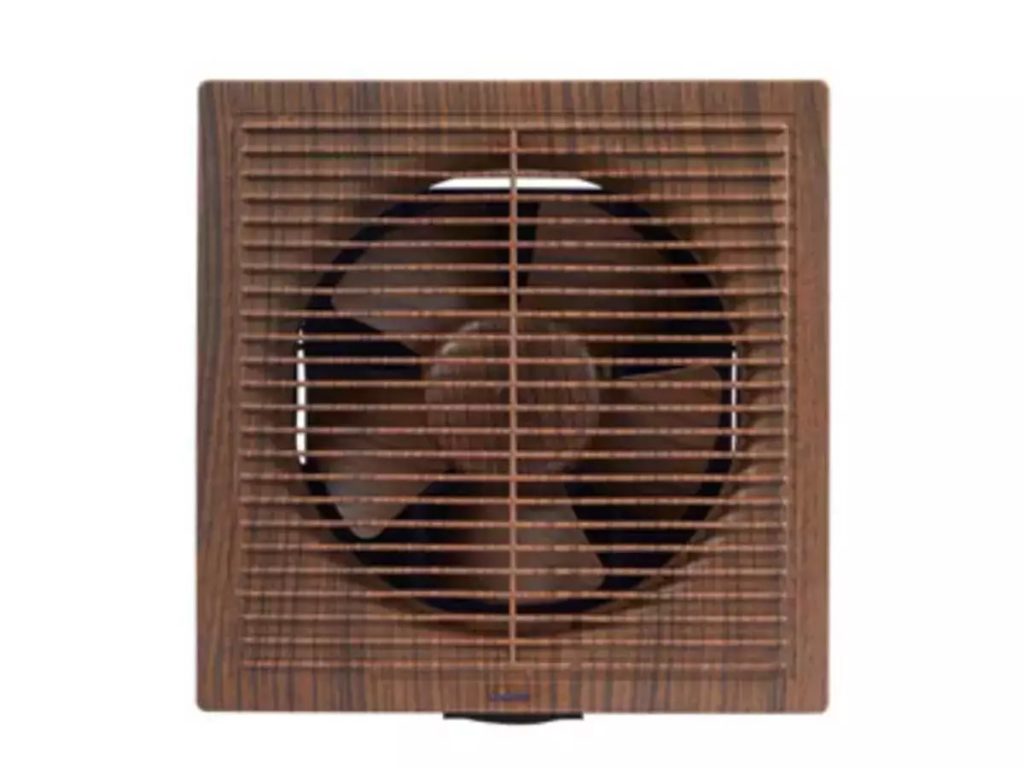
You have to replace the fans of your bathroom vent every eight years if you want to keep your vents running efficiently.
Before buying a new one, always check the type currently installed in the vent, as these fans are perfectly fitted to maximize their use.
Most vent fans used today are hardwired and thus might require the assistance of an electrician to properly install them. However, if your vent fan can connect to a power outlet, then you might be able to do the replacement by yourself.
Always make sure the fan is perfectly fitted inside your vent, as it can only work properly by keeping all the moisture it sucks in the vent. Any gaps can affect the fan’s effectiveness and lessen its ability to expel the vapor efficiently.
Where should I place my bathroom vent?

The best place for your bathroom vent is directly above or near your bathtub and shower. The purpose of your bathroom vent is to remove moisture from your bathroom as quickly as possible.
Placing it further might reduce its efficiency and prevent it from completely removing the moisture in the room.
Eventually, the moisture will build up and lead to high humidity in your bathroom, which will make condensation of water vapor a lot easier.
Condensation is one of the main causes of water leaks in your bathroom vent. Seek the help of a handyman if you need to move your vent and fan.
How long should I keep the bathroom vent fan running?
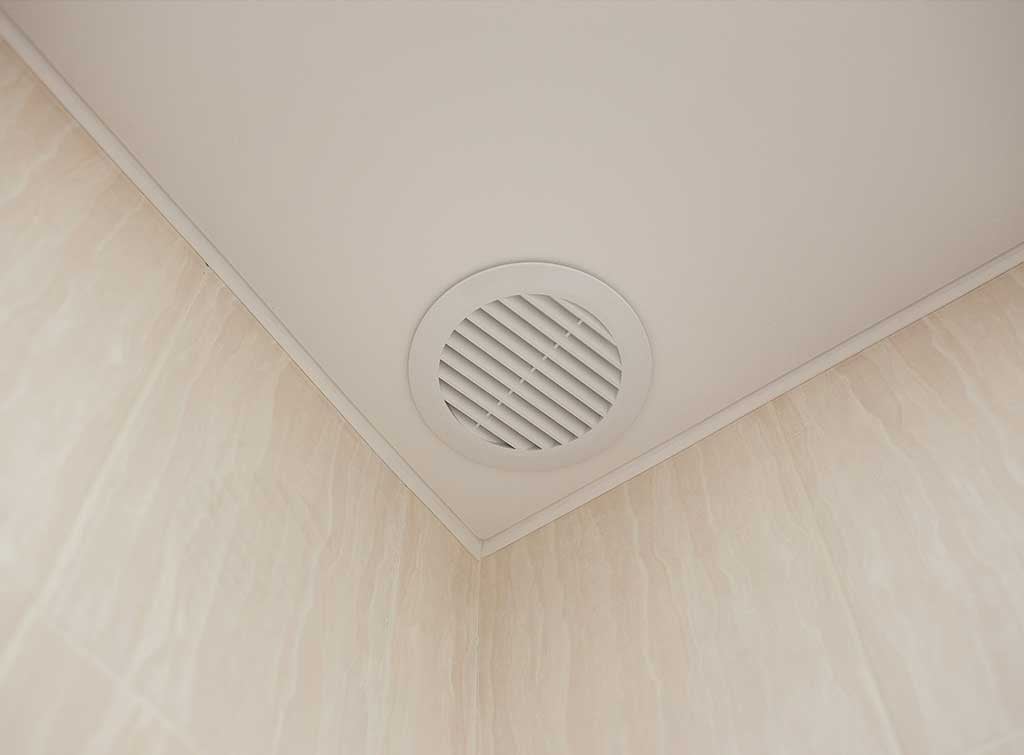
Keep the bathroom vent fan running for 10–15 minutes after you shower. Keeping the fan on allows it to fully remove the built-up moisture in the bathroom and expel it outside of the house.
By keeping the fan on, you avoid making your bathroom too humid, which can often result in condensation.
Aside from the damage condensation may cause on your bathroom vent, it can also promote fungi growth in the bathroom, which can pose a health risk when the mold colony grows too big.




